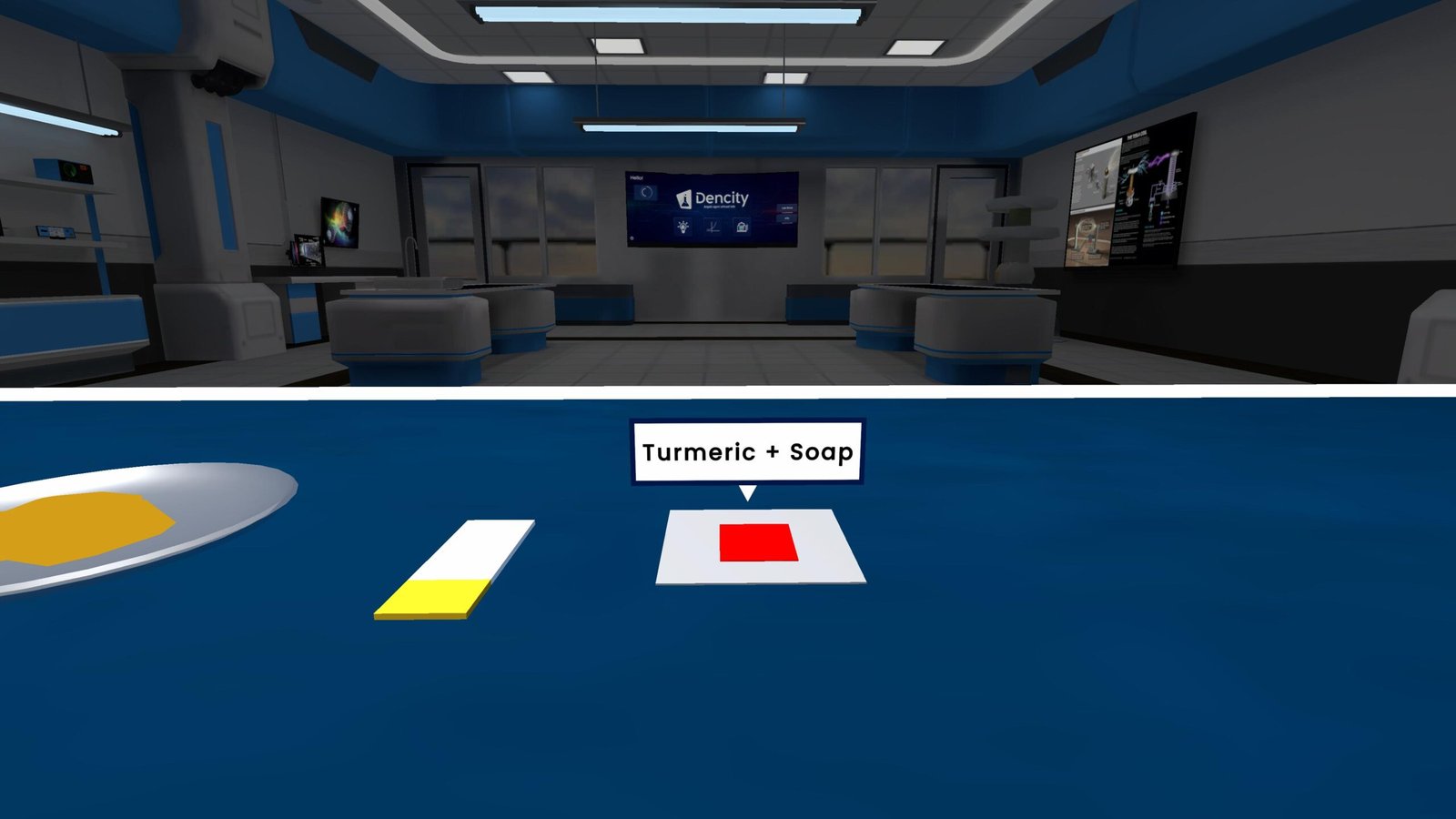Turmeric as a Natural Indicator Experiment
Turmeric is more than just a spice in your kitchen — it also works as a natural acid-base indicator. This means it can help us identify whether a substance is acidic or basic (alkaline) just by changing color!
What is Happening in the Experiment?
Turmeric contains a yellow-colored compound called curcumin. Curcumin reacts differently when it comes into contact with acids or bases:
- In acidic or neutral solutions, turmeric stays yellow.
- In basic (alkaline) solutions, turmeric turns red.
In this experiment, we make turmeric paper by mixing turmeric powder with water to form a paste and applying it to a paper (like blotting paper). After it dries, a drop of soap solution is placed on it. The paper turns red where the soap touches it — confirming that soap is a base, and turmeric acts as a natural indicator.
Real-Life Uses of Turmeric as an Indicator
- Homemade pH strips: You can use turmeric paper to test household substances.
- Detecting soap residues: Helps see if soap is left behind after washing.
- Demonstrating science concepts: Great for science fairs and projects.
- Spotting spoilage or contamination: Some spoiled foods become alkaline, which turmeric can detect.
What Do We Observe?
- Soap turns turmeric paper red.
- This tells us that soap is alkaline (a base).
- Therefore, turmeric is a simple and safe natural indicator.
Summary Table
| Substance | Effect on Turmeric Paper | Conclusion |
|---|---|---|
| Soap Solution | Turns Red | Soap is a base, turmeric is a natural indicator |
Explore Natural Indicators with Dencity Virtual Science Lab
Using the Dencity app, students can explore how substances like turmeric can be used in science experiments to identify acids and bases — all in a safe, cost-efficient, and virtual environment. The Dencity virtual lab allows students to:
- Simulate making turmeric paper.
- Apply different solutions to observe color changes.
- Understand the concept of pH, acids, and bases interactively.
- Learn through trial-and-error without needing real materials.
This experiment is suitable for class 7 to class 10 science and is perfect for introducing young learners to the fascinating world of natural chemistry.
Dencity for Teachers
Dencity supports interactive teaching by giving teachers tools to:
- Run live acid-base experiments virtually.
- Assign and track homework automatically.
- Use visual aids to teach concepts like indicators and pH levels.
- Replace traditional labs with engaging, hands-on virtual experiences.
- Promote interactive learning with step-by-step simulations and variable controls.
Works Great on Interactive Touch Panels
Dencity is optimized for touch panels in classrooms. Teachers can use simple finger gestures to apply virtual solutions, observe color changes, and explain chemical behavior in real-time — making science interactive and engaging.
Contact Us for Custom Pricing or a Demo
Are you part of a school or educational institute? Visit dencityapp.in to request a custom pricing plan or book a free demo. Let us help you bring modern science learning to your classroom!
Frequently Asked Questions (FAQs)
- What is turmeric used for in science?
Turmeric acts as a natural acid-base indicator that changes color when exposed to basic substances. - Why does turmeric turn red with soap?
Soap is basic in nature, and turmeric reacts to bases by changing from yellow to red. - What is curcumin?
Curcumin is the compound in turmeric responsible for its color-changing properties. - Can I test lemon juice with turmeric paper?
Yes, but it will stay yellow since lemon juice is acidic. - Is this safe for kids?
Absolutely! Turmeric is a safe, natural substance — perfect for young learners. - Can I make turmeric paper at home?
Yes! Mix turmeric with water, apply it to paper, let it dry, and cut into strips. - What class level is this experiment suitable for?
It fits well into class 7 to class 10 science syllabi. - Does Dencity show real-time reactions?
Yes, the app simulates real-world behavior with instant feedback and color changes. - Can teachers assign this experiment as homework?
Yes. Teachers can assign it in under 30 seconds and track submissions. - How can schools get access to Dencity?
Visit dencityapp.in to request a demo or discuss a pricing plan.
Bring chemistry to life with Dencity – your virtual science lab for the future.







